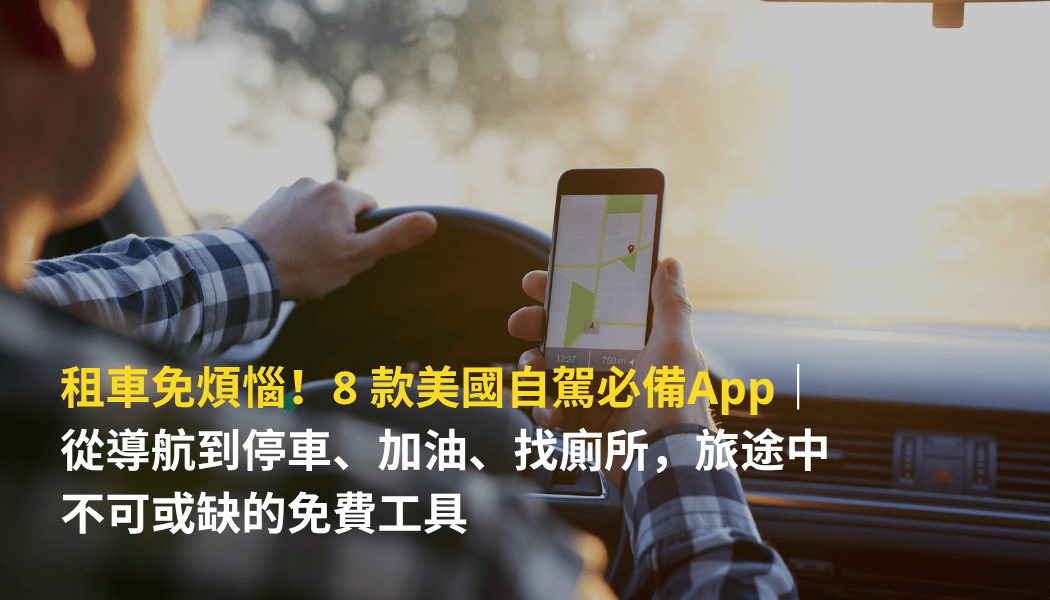The wildfires in Los Angeles, California are so bad that even Universal Studios has announced an emergency closure due to the fire and strong winds to protect its employees and tourists from the uncontrollable wildfires. We all want to travel safely and smoothly, but what should we do if we encounter such unavoidable emergencies when we rent a car and drive in the U.S.? This article provides information on wildfires, earthquakes, snowstorms, wildlife runaways, floods, and physical emergencies to ensure that you are prepared for any situation you encounter while traveling.
U.S. Driving Emergency #1: Wildfires
Wildfires can easily get out of hand due to wind and dry weather. In recent years, California wildfires have become more and more serious due to warming, and are unpredictable and harder to prevent. If you are traveling in California, it is recommended that you download a mobile app that tracks wildfires. Watch Duty,FEMA The U.S. also has an alert system similar to the one used in Taiwan for earthquakes, where cell phones in the affected area receive alerts. The U.S. also has an alert system, similar to the one transmitted during earthquakes in Taiwan, which is received by cell phones in the area of impact.
If you see a wildfire on your route, be sure to avoid the route and stay out of the area, especially since Google Maps in the U.S. is very up-to-date and will immediately show road closures and reroutes.
If you are unfortunate enough to be traveling in the path of a wildfire, judge the situation. If it is safe to travel through the area, stay in your vehicle with the windows closed, the air supply on, the headlights or warning lights on, cover your body with a blanket or jacket, and keep an eye out for falling objects, such as tree trunks or buildings, and drive steadily away from the area. If you have to stop or are trapped, stay away from bushes or trees, stay in the vehicle with the windows closed, air supply turned off, headlights on, and the engine turned off. Cover yourself with a blanket or jacket and wait for the wildfire to pass through the vehicle, and be sure to keep the metal parts of the vehicle hot from the fire, so avoid scalding your skin. If you have time, call 911 and tell rescuers where you are.
In addition, please do not abandon your vehicle directly in the middle of the road, as this may make it more difficult for firefighters or ambulances to respond. Each wildfire situation is different, if the Emergency Relief Center announced evacuation, you must follow the instructions to leave; if the Los Angeles wildfires occurred in an area close to the city, resulting in many vehicles stuck in the road, so the center urged people to run away and not to stay in their cars, so it is still necessary to make appropriate judgments based on the situation and the official recommendations.
U.S. Driving Emergency 2: Earthquake
If you are from Taiwan, you are more accustomed to earthquakes and know how to cope with them, but given the geographic and cultural differences, it is important for you to be extra careful and vigilant when you are in a foreign country. In the event of a felt earthquake, please pull over safely, stay away from bridges, viaducts, trees, and utility poles, and stay in your car with your seatbelt fastened until the earthquake is over.
When you return to the road after the earthquake, pay special attention to falling rocks, unstable bridges and roads, or falling objects, and turn on the radio to learn about local traffic conditions and avoid dangerous roads.
U.S. Driving Emergency 3: Snowstorms
Travelers who are not accustomed to driving on snowy ground should be especially careful when encountering snow, because snow reduces the friction of the tires, and if you drive too fast, you may easily skid and crash due to the inability to apply the brakes, and you have to be especially careful in the early morning and in the afternoon, when the temperature is lowered and the roads are melting and icing. Generally speaking, snow can be avoided in advance. If you know on the weather forecast that there will be heavy snow or blizzards in the area you are traveling to, please consider your own situation and decide whether or not to go on the trip as scheduled.
If you know in advance that you will be driving in snowy conditions, rent snow chains from a rental car company and find out how to put them on your tires beforehand. Remember to slow down and avoid emergency braking or making big turns when driving in snowy conditions. If the snow is too heavy for visibility, turn on your dual flashing lights to warn other drivers. Pack enough warm gear, drinking water, spare food, flashlights, and full tank of gas in the car. There may be a situation where the wind and snow are too heavy, and you may get stuck in the snow and have to stay on the road for a long period of time. If you are unable to continue driving, stay in the car, start the engine, turn on the heater, make sure the exhaust pipe is not blocked by snow, and wait for the situation to be resolved.
Considering that travelers are not familiar with driving on snow, Sky Horse has specially planned a "Snow Driving" program.Self-Driving Partner Handbook"In addition to general road driving tips and traffic rules, Sky Horse also contains highly reliable links to weather and road conditions in national parks, snow driving precautions, as well as instructional videos on installing snow chains, to help every traveler who chooses Sky Horse to be well-prepared for a road trip!
U.S. Driving Emergency #4: Wildlife Jumping Out
When driving on highways or roads in the U.S., you may encounter wild animals standing on the road at night or suddenly jumping out of the road. If there are wild animals on the road, you may see a deer painted on the side of the road or a yellow sign that reads Caution!Wild Animals, so you need to pay attention to it. Avoid sharp turns or emergency braking, as it may cause more serious accidents, such as rear-end collisions. If you see an animal from a distance (usually with eyes reflecting under the lights), you can use your double flashing warning lights to alert the car behind you to go around or brake slowly. Assuming there is no reaction time at all, it is better to hit the animal directly than to brake or make a sharp turn. When you hit an animal, drive safely to the shoulder of the road or pull over, call 911 to verify that the occupants of the vehicle are not injured and that the vehicle is damaged enough to continue driving, and contact the local police via LINE Contact Sky Horse to speak to a specialist and we will help advise how to take the situation further.
U.S. Driving Emergency #5: Flooding
California flooding is frequent, and with the extreme weather phenomena occurring more intense, often resulting in flooding conditions, near the coast of the region may also be due to earthquakes, tsunamis, sea water back up, travel in California need to pay more attention.
If you encounter flooding while traveling, avoid flooded areas and detour away from rivers, streams, and seashores. If there is already severe flooding in the area and rain continues to fall, you can drive to higher ground and stay there for a while, waiting for the water to recede before continuing your trip. If you are trapped in the water by the rising water, do not drive on, leave the vehicle as soon as you can safely and leave the flooded area on your own or call 911 for assistance.
U.S. Driving Emergency #6: Physical Abnormalities
When driving in the U.S., since the distance is much longer than the normal driving time in Taiwan, you may have to drive for more than six or even more than ten hours a day to reach your next destination, and each rest stop is much farther away and more inconvenient, and there are many unfamiliar conditions for foreigners in a different place, it is recommended that you prepare drinking water, food to replenish your strength, and medicines for your physical condition (e.g., gastrointestinal medicines, allergy medicines, pain relievers, fever medicines) and simple first-aid supplies in your car to avoid being unable to deal with any unexpected physical conditions during the journey, Allergy medicine, painkillers, fever reducers, etc.) and simple first aid supplies, so as to avoid being unable to deal with any sudden health problems during the journey.
If you are driving in the U.S. and feel unwell, please stop and go to a safe place. If you are on a highway, stop on the shoulder of the road and flash your yellow lights to warn oncoming traffic, and call 911 for an ambulance. If there are other passengers in the car who are able to drive, you can drive to the nearest hospital or emergency center and maintain your body fluid intake.
If two or more traveling companions are able to drive in the U.S., even if one of them is the primary driver, an "extra driver" can be added to the rental vehicle to ensure that in the event of a situation, the other person will be able to drive the rental vehicle and enjoy the same protection.
No one wants to encounter accidents or natural disasters while traveling, much less the world, but even with the occasional challenges of travel, it is important to explore the beauty of the world. We believe that by being prepared and knowing what to do in the event of an emergency, you will be better equipped and wiser to make the best decisions in the event of an accident. If you choose to rent a car from Sky Horse, you will be able to seek help from reliable professionals in the most familiar language and way when you are in an accident, and we have a 24-hour, zero-hour Taiwan-US synchronized LINE Our online service provides you with the most reliable advice and services for your driving trip in the U.S. If you have any concerns about your journey, you can let us know immediately because Sky Horse is a good partner for your driving trip in the U.S.
🎉 2025 Spring and Winter Vacation Car Rental Rebate [ sh2025 ] Offer Countdown is on!🎉
Days
Hours
Minutes
Seconds


